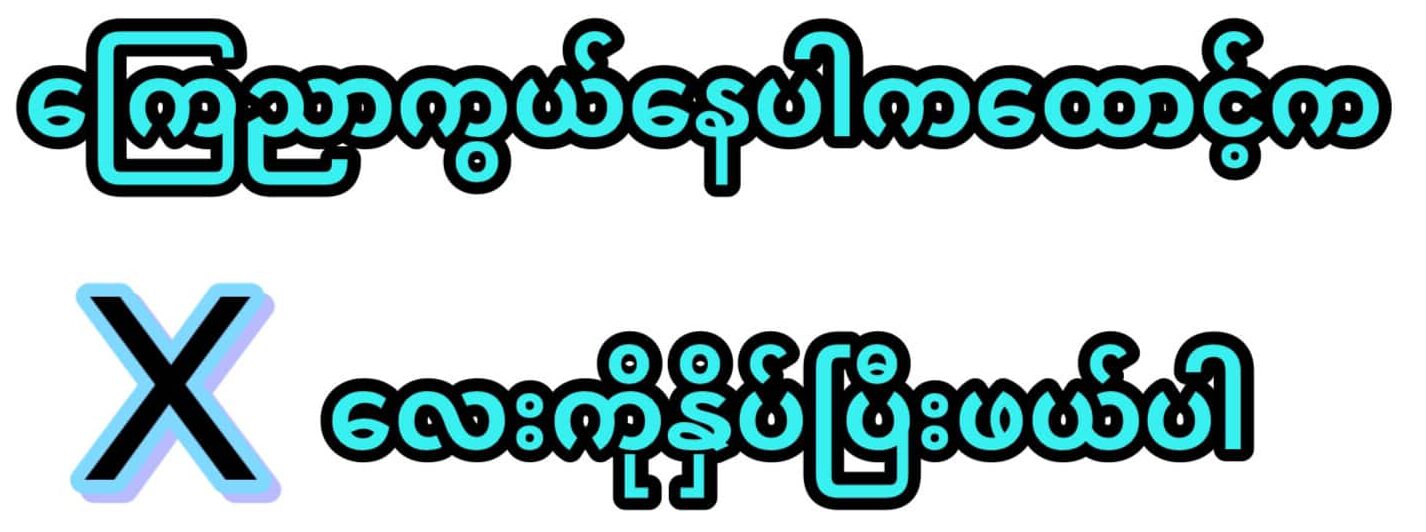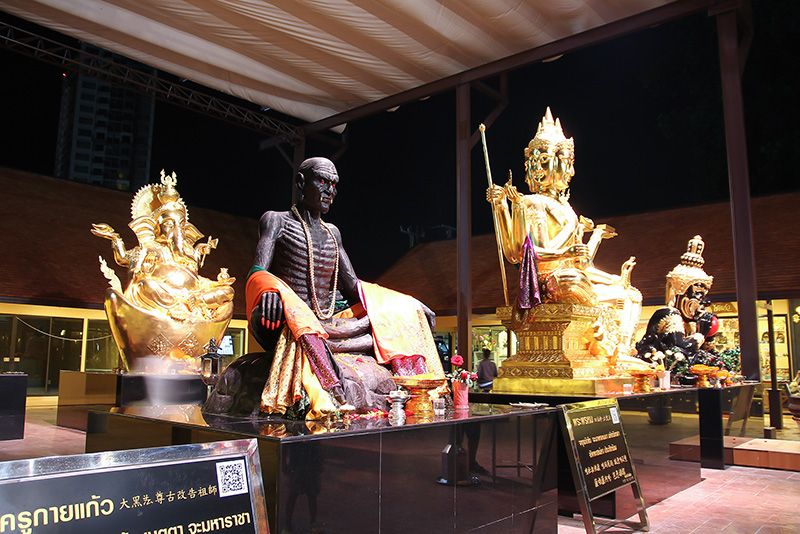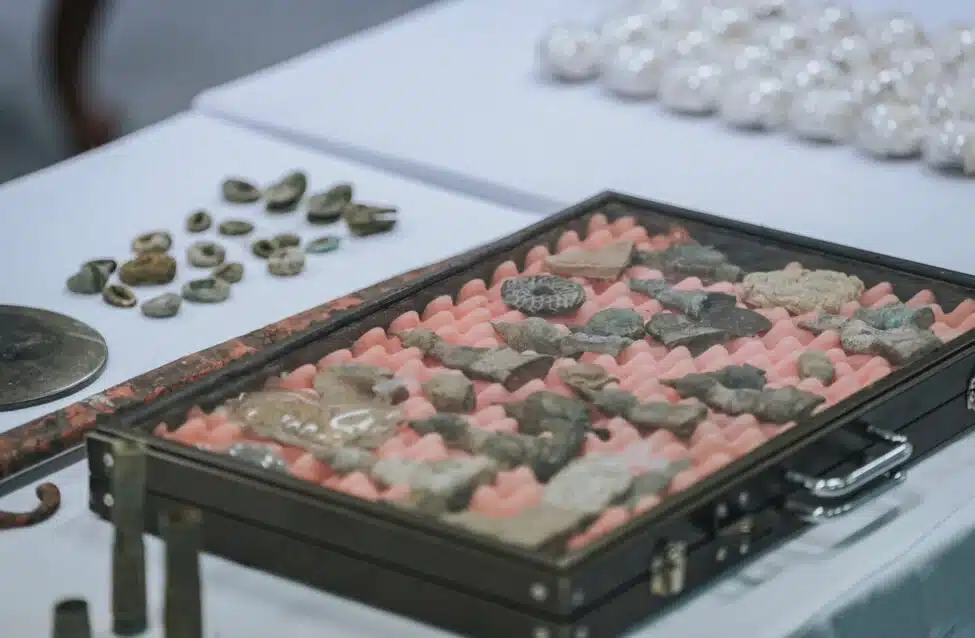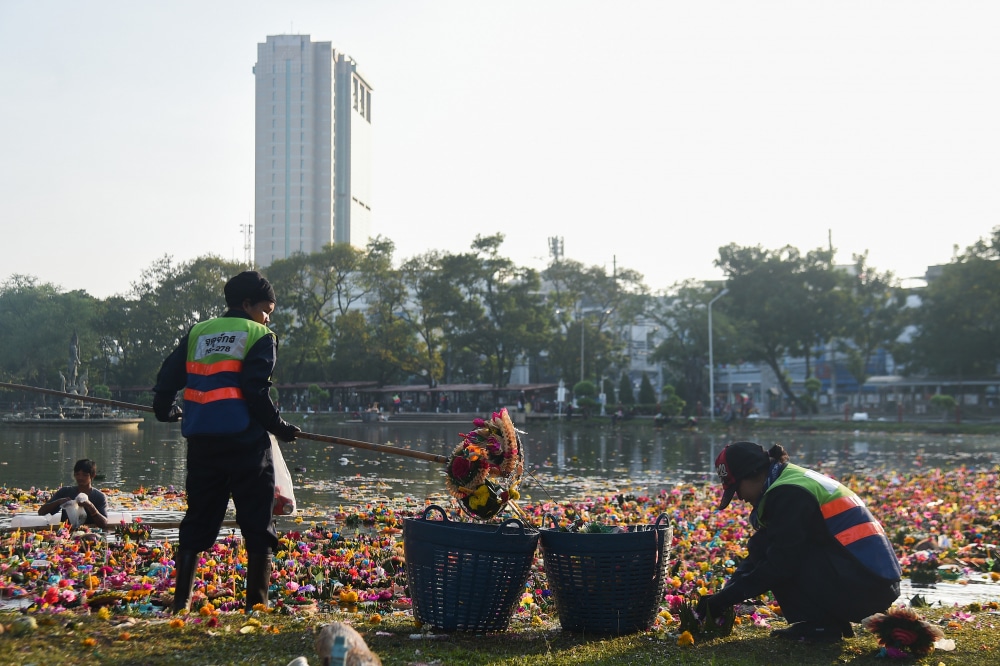Presenting itself as a colossal edifice, the statue named Kru (Guru) Guy Kaeo, with its formidable and almost eerie visage evoking the architectural gargoyles adorning the renowned Notre-Dame Cathedral, has found itself at the heart of a burgeoning worship trend within Thailand. Interestingly, this remarkable statue, despite its apparent Cambodian origins, has captured the attention of the Thai populace, propelling it into a newfound era of reverence.

A notable event unfolded on the 9th of August, when Ratchadapisek Road bore witness to a traffic quagmire of epic proportions. The cause? The transportation of the Kru Guy Kaeo monument from its original site in Ratchaburi province to the bustling city of Bangkok.
This endeavor, however, encountered an unexpected obstacle when the statue failed to navigate its way beneath a pedestrian bridge. The ensuing predicament catalyzed a flurry of social media commentary, with users expressing both critique for the incident and opinions about the statue itself.
Subsequently, the statue found its resting place in the prominent Ratchadapisek-Ladprao vicinity, standing as a testament to its perceived significance.
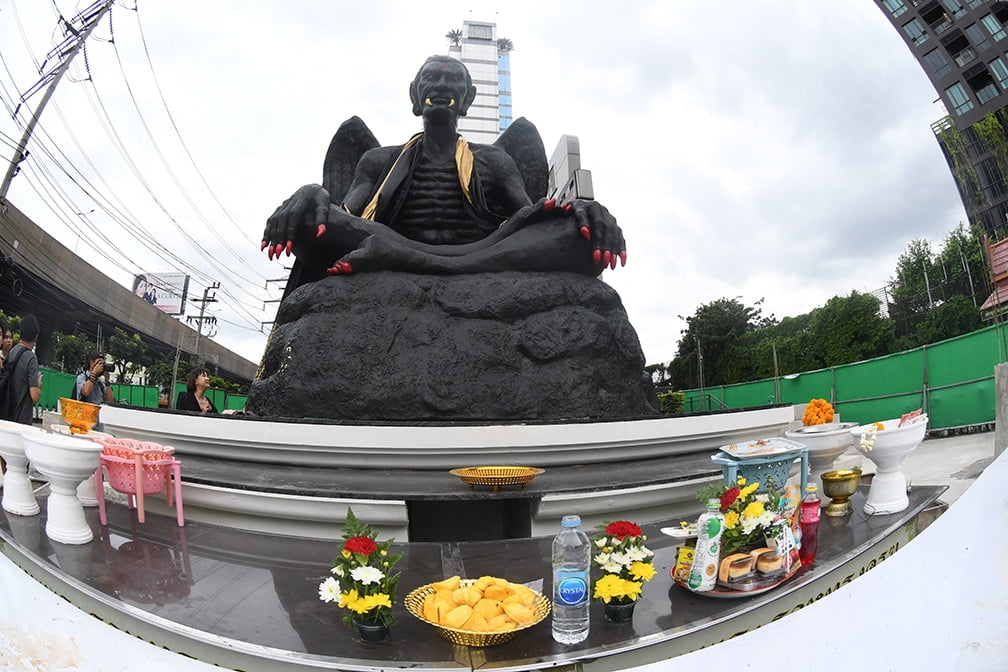
Dubbed as “Kru Guy Kaeo,” the statue is purported to represent a revered figure within the Khmer faith. Some accounts link this enigmatic figure to King Jayavarman VII, the architect behind the iconic Bayon Temple and acclaimed as the pioneer of devotional Buddhism among monarchs. However, a curious absence of any historical reference to “Kru Guy Kaeo” raises pertinent questions about its authenticity.
Following its installation, an intriguing phenomenon took root, as people from diverse walks of life began to converge around the statue, offering prayers and seeking fortuitous lottery numbers—a common yet intriguingly deep-seated superstitious custom within Thai society. Strikingly, certain corners of the online realm propagated advice suggesting that the act of efficacious worship required animal sacrifices, particularly dogs or cats. This unwarranted counsel elicited a strong response from animal lovers and advocates, sparking a ripple of opposition and resentment.
Nattawut Rattanasuk, a devoted follower of Kru Guy Kaeo and the visionary behind the Ganesha Tewalai Bang Yai in Nonthaburi—a sanctuary that proudly boasts a life-sized Kru Guy Kaeo statue erected over four years ago—was quick to address the misconception. In a fervent clarification, Nattawut emphasized that genuine veneration of Kru Guy Kaeo did not necessitate disrupting lives or resorting to animal sacrifices.
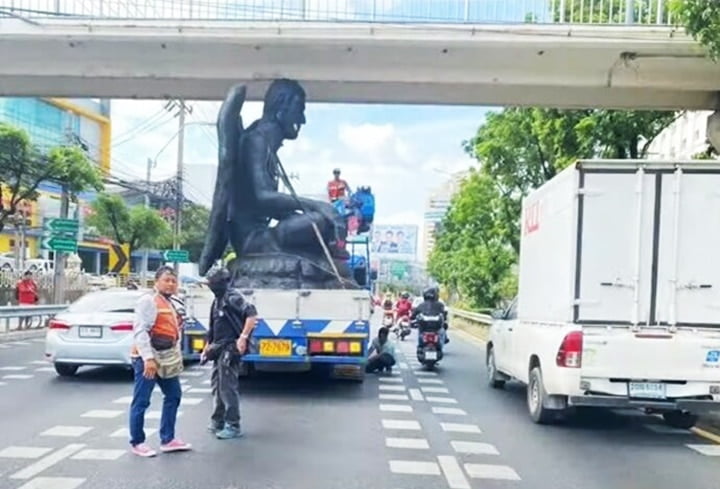
“Performing rituals that involve animals is inherently ethically unsound. How can one possibly expect to attain blessings through actions that cause harm?” Nattawut passionately questioned.
Diving deeper into this intriguing saga, Special Professor Thongtong Chandransu—an erudite scholar well-versed in history, religion, and culture—illuminated the perplexing enigma surrounding Kru Kai Kaeo. Thongtong noted the dearth of credible evidence supporting the claim that Kru Kai Kaeo served as an educator to King Jayavarman VII. While the existence of such a belief isn’t contrary to the law, it does, however, hint at a latent psychological unease lurking within society’s collective consciousness.
Thongtong articulated, “This statue, drawing homage from the masses despite their limited comprehension, transcends conventional artistic categorizations. It stands devoid of distinctly human or animal traits. The rationale behind the auspiciousness attributed to worshiping such an entity still eludes me. Moreover, I harbor concerns about the unintended repercussions this phenomenon might bring.”
From the perspective of the religious establishment, the eminent Phra Payom Kalayano—a venerable monk hailing from Wat Suan Kaew—offered a profound perspective. He estimated that the fervor surrounding Kru Kai Kaeo might sustain itself for a span of approximately six months to a year, echoing the transient nature of previous trends that have swept through Thai society.
“I ardently hope to prevent the emergence of conflicts borne out of divergent beliefs. My aspiration centers around nurturing understanding and respect for the multifaceted tapestry of beliefs that enrich our culture. However, even in the embrace of a belief system, one must exercise discernment, evaluating its validity, merits, and potential drawbacks. Let us not become ensnared in beliefs that inadvertently sow suffering,” Phra Payom imparted sagely.

